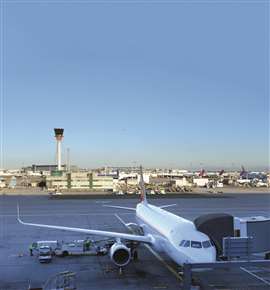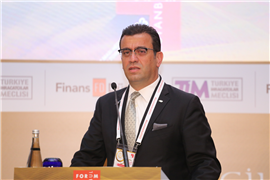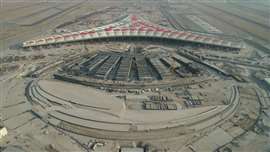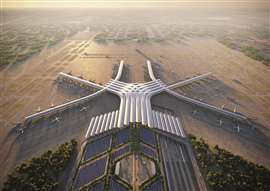
In recent years, Europe has seen a surge in airport construction projects to modernize aging infrastructure and meet growing air traffic demands, but these efforts have faced numerous challenges, from bureaucratic hurdles to environmental concerns.
It is well known that before the coronavirus pandemic hit, airport construction on the continent was unable to keep pace with rising demand. Combined with inefficient airspace control, this led to potential capacity constraints, significant travel delays and even the risk of passengers not being able to fly to their desired destination on the day they wanted.
According to the CAPA Centre for Aviation, there are 177 known infrastructure projects at European airports with a combined investment value of 100.1 billion euros (109 billion US dollars).
One of the biggest problems with airport construction projects across Europe is the complex approval procedures and bureaucratic burden. The lengthy and complicated approval procedures often lead to significant delays and excessive costs.
Increased spending
A good example of this is the expansion of London’s Heathrow Airport in the UK, one of Europe’s busiest hubs. This airport is currently mired in a lengthy legal battle over environmental concerns and airspace congestion, which is hampering progress and driving up costs.
Plans to add a third runway to Heathrow Airport were put on hold at the start of the Covid-19 pandemic. Four years later, the project is still officially “under review”.
Former Heathrow Airport CEO John Holland-Kaye has stressed that the expansion project should also be a top priority for the new CEO. During his time in office, Holland-Kaye played a key role in developing the Heathrow expansion plan, which was approved by Parliament, and he continued to support the proposals until he leaves office in 2023.
When Holland-Kaye announced his resignation as CEO, he told the British newspaper The Independentt: “We are still focused on expansion. We have already started some preparatory work for expansion as we now have the necessary bandwidth.”
Mitigating challenges
Logistical challenges such as material procurement, transportation and on-site coordination can pose obstacles to completing a project on time, but there are ways around them.
 Mr. Hakan Öztürk (Photo: Limak)
Mr. Hakan Öztürk (Photo: Limak)
Turkey-based construction company Limak Construction, which was involved in the construction of the huge new airport in Istanbul, was also awarded the largest contract ever received by a Turkish construction company outside Turkey: it was commissioned to build the new terminal at Kuwait Airport.
Hakan Öztürk, CEO of Prishtina International Airport in Kosovo, which is operated by Limak, says that to overcome the challenges, the company is sourcing materials from trusted, long-standing suppliers to minimize the risk of delays and shortages.
“While we use local and global suppliers to control costs and ensure timely availability, unforeseen circumstances can still pose challenges to our planning.
“To achieve this, we implement robust logistics planning that includes contingency strategies such as possible multimodal transportation arrangements to address unexpected delays or transportation issues. In addition, we leverage various project management tools and technologies to coordinate team planning and track progress to ensure seamless on-site coordination and timely project completion.”
Öztürk adds that the company is also setting up manufacturing facilities on site where possible and appropriate. He says: “This gives us more control over the production required for the construction program and reduces the supply chain to just materials.”
Rising costs
Building and expanding airports is extremely costly, and the pandemic has raised questions among many about whether further investment is safe or beneficial to the environment.
Plans to expand several airports across Europe have recently been slackened due to flying’s contribution to climate change. Two major decisions – one in Vienna and one in London – are thought to suggest that commitments to reduce greenhouse gas emissions are causing some to rethink the benefits of airport expansion.
Environmental considerations play an important role in the development of airports. The construction and expansion of airports are often located in ecological hotspots and provoke strong opposition from environmental activists and local communities.
In response to concerns about environmental impact, Öztürk and the rest of the Limak team found innovative construction methods to improve the efficiency, safety and sustainability of airport construction.
Öztürk says they are using cutting-edge Building Information Modeling (BIM) technologies to increase the precision of Limak’s construction planning and execution.
“In particular, the implementation of BIM in our Kuwait project, which includes a new terminal with an area of over 700,000 m², is one of the largest applications of this technology.”
Limak Construction was awarded the contract to build the new terminal building of Kuwait International Airport (KIA-T2) and was confirmed for construction in 2016.
 Kuwait International Airport (Photo: Limak)
Kuwait International Airport (Photo: Limak)
In collaboration with the architectural firm Foster & Partners, Limak aims for the KIA-T2 project to be a LEED GOLD building that generates solar energy by combining the thermal properties of the concrete structure with roof-mounted solar panels.
Öztürk emphasizes that Limak uses modular construction techniques to increase efficiency on a larger scale.
“This approach facilitates the off-site manufacture of airport components, streamlining on-site assembly processes. The result is a reduction in construction time and disruption.
“In line with the sustainability goals tailored to airport construction, we emphasize the use of environmentally friendly building materials and energy-efficient systems. In addition, we implement and monitor a comprehensive construction waste recycling program at each project site.”
A life cycle approach
Gurjit Wood, former head of Arup’s aviation business in the UK, India, Middle East and Africa, stresses that airports, like other resource-intensive infrastructure, could move to a 360-degree lifecycle approach to the design, construction and operation of new and existing assets.
She says: “In this way, they could implement a circular economy approach in their construction by introducing material passports and other measures that enable the reuse of materials at the end of the life of the assets, thus reducing lifetime emissions and thus preserving the value of construction products and assemblies.
“In (Arup’s) work with a leading airport, our assessments enabled us to identify 8,500 square metres of existing concrete pavement that could be retained and reused following upgrade works. It’s about adopting a different mindset and anticipating reuse wherever possible.”
ACI’s Airport Carbon Accreditation programme, along with the introduction of new government regulations such as the UK Government’s proposed Decarbonisation Plan and the European Union’s Green Deal proposals, are playing a critical role in shaping the rapid changes needed to reduce waste and sequestered carbon. These initiatives also set strict targets for renewable energy procurement.
Wood says governments can also undertake a life cycle cost analysis of airport projects to help operators understand how to achieve net zero on existing and new buildings. She stresses that net zero is possible but needs to be approached in an integrated way and from multiple operational perspectives.
Beyond the challenges
 Poland’s Centralny Port Komunikacyjny (CPK) (Photo: Foster + Partners)
Poland’s Centralny Port Komunikacyjny (CPK) (Photo: Foster + Partners)
Another major airport project facing challenges is Poland’s Centralny Port Komunikacyjny (CPK).
CPK is a planned interchange hub between Warsaw and Łódź in Poland, which will integrate air, rail and road transport. The new international airport will be built from scratch and will be located in a suburb of Warsaw.
The passenger terminal covers an area of approximately 400,000 square meters, is spread over two levels and is connected to four modular piers that can be expanded in the future to meet market demands.
Poland’s new government announced a pause in construction and an “examination” at the beginning of the year. Opponents of the new central airport argued that the construction costs would place too great a burden on the state budget.
The project developers estimate that the cost of building the airport will be around 8.4 billion euros. However, taking into account other costs, this amount could rise to up to 27.5 billion euros.
The government’s new approach focuses on reviewing the CPK project rather than stopping it, allowing more political flexibility in deciding whether the project is necessary for Poland and Europe.
Expansion is imminent
The COVID-19 pandemic has caused delays in construction projects around the world, causing a significant setback in the development of airport infrastructure.
However, there is encouraging news that investment in airports is increasing and plans are underway to modernise other European hubs as demand continues to grow.
Limak’s Öztürk knows there is still turbulence ahead and stresses that strict environmental regulations and the need for resilient infrastructure that can withstand the effects of climate change are becoming increasingly important.
In addition, he believes it is also necessary to strengthen compliance processes and introduce more technology into the construction process in order to make projects more efficient and sustainable.
“A key challenge,” he says, “is the increasing importance of integrating digital technologies such as AI into construction processes.”
“We also expect that collaboration with relevant industry stakeholders, including strategic partnerships with technology companies and academic institutions, will continue to grow in importance for our industry.”
Form placeholder

